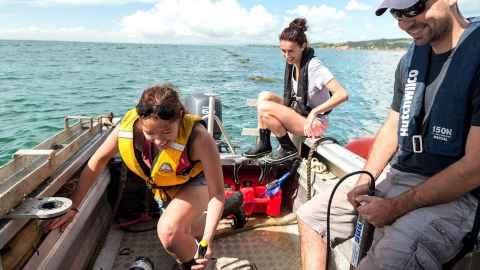How can we pollute our land like this?
15 May 2018
Opinion: Water, it was there at the start of all things and it binds us all together, no matter our colour race or creed. But water is also a political issue. There is no question about that; it bridges all realms of politics and crosses all political boundaries. Tragically, there is also no question about the terrible impact we are having on our water in almost every corner of the world.

In Auckland alone, we have felt the brunt of this impact with the surge of beach closures we had over the past summer, often as a result of the increase in sewerage overflows due to extreme weather events.
And with climate change, this will only increase. Moreover, we are making a shameful contribution to the global increase in greenhouse gases and the high levels of nitrate, phosphate and organic contamination of our lakes, rivers, ground water and coasts.
However, even if New Zealand takes firm steps to improve our environmental record, we cannot be fully sustainable if the rest of the world is not. And nowhere is the global contribution to contamination more apparent than in the ever-increasing impact ocean acidification is having on marine ecosystems across the world, as well as in New Zealand.
It may be a tired old cliché, but the reality is, changes will only be made if we all work together. We must look at new ways to get the message out there to inspire the desire for change across all our communities.
Collaboration between art and science is one new approach that will broaden the scope of the environmental message. It will help change the way we look at the environment and encourage fresh ideas on how communities, artists and scientists can work together to protect it.
We saw this collaboration in action this month when scientists and artists came together for a panel discussion, Water: Art, Science and Cultural, at the Tauranga Art Gallery. The idea behind the panel is for the different disciplines to work together towards new future collaborations and transformations for our future world.
It may be a tired old cliché, but the reality is, changes will only be made if we all work together.
One major message came from Dr Ian Mclean, from the Toi Ohomai Institute of Technology, when he said: “We are the problem, and we cannot continue what we are doing”. This includes the way we model our economy, where no emphasis is made on including the impact of ecosystem services in economic modelling.
Bruce Clarke, the facilitator of the panel, said: “We either need to change drastically or the future climate will do it for us”. The fact is, the top environmental problems are not the pollution or CO2 emission, but our own selfishness and apathy.
From a cultural perspective, Antoine Coffin talked about how people will prosper through the sustenance of the sea and the the land. This cultural perspective demonstrates how important it is for science to include culture towards developing options to help battle ongoing issues of climate change and pollution. Water is synonymous with Māori, hence the importance of including iwi, as well as the next generation, the Rangatahi, in the conversation of continuing change.
Alongside culture, art gives us the chance to help share the message and help communities realise what we are doing to our environment, and how to help change “business as usual”. Jeanette Scharing, an environmental artist and researcher, demonstrated how we are all connected with the environment.
Currently, there are several cases where science, culture and art have come together to promote tangible knowledge and provide thought towards change, including the work by Jeanette Scharing, Whose water are you? On display at Tauranga Art Gallery, this work creates a dialogue about water in us, in our environment and in our lives. Charlotte Graham, an artist at Corban estate, who has been a staunch environmental advocate through her art collectives, includes a collection on the impact of Ocean Acidification in New Zealand.
Additionally, Ngahiraka Mai Tawhiti, the voyaging waka, have been indispensable in their efforts to bridge science and culture, demonstrating the impact of microplastics in our coasts, across New Zealand, with a planned education series in Tauranga in early June.
By bringing together environmental perspectives from the science, arts and cultural communities, we open the call for change to the wider population and encourage everyone to ask: How can we pollute our land like this? What has happened? And then we can address the fact that there has been a suppression of taking control, which, alongside our selfishness and reluctance to move away from the “business as usual” scenario, has meant we are moving incredibly slowly towards change.
However, the time has come for us to change now, even as individuals if the government will not. We need to change the script from the comfort of “business as usual” and towards a more strategic, long-term view, which includes developing a solid, robust, set of fundamental values of water. We need to start seeing each other, not in a hierarchical sense, but as fellow humans. And most importantly, it is time for science, art and culture to come together to build empathetically tangible knowledge to help communicate to communities what future change is needed, and what we can do to achieve it.
Emily Joy Frost is a doctoral candidate in the University of Auckland’s School of Biological Sciences.
This article reflects the opinion of the author and not the views of the University of Auckland.
Used with permission from Newsroom, How can we pollute our land like this? Published on 15 May 2018.